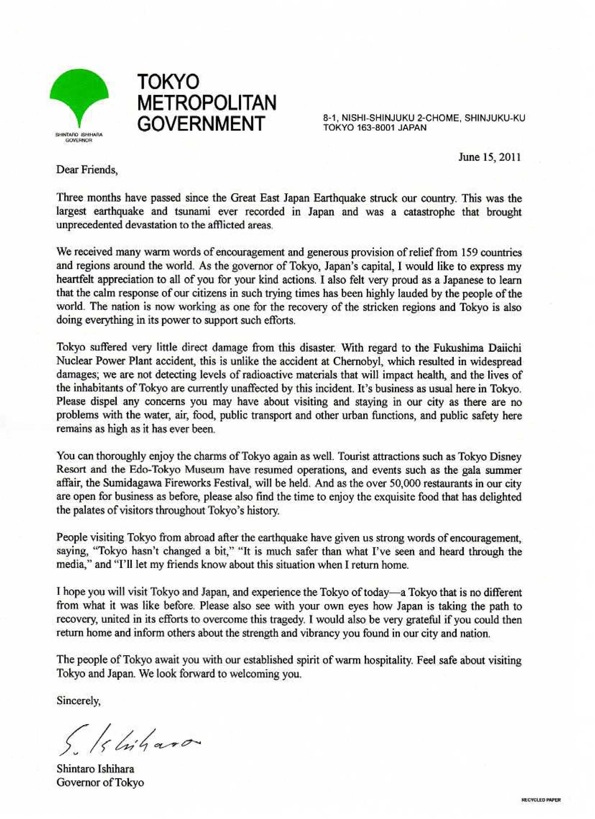JapanQuest Journeys is Featured in TurboJet Horizon Magazine
Posted on April 13, 2012 within News, Press
JapanQuest Journeys is featured in a recent edition of TurboJet Horizon Magazine as a bespoke travel company serving private jet tourists in Asia—adding that, JapanQuest Journeys is dedicated to showing its clients the “real” Japan specializing in insider experiences.Click Here For Full Article
All the Green Tea and More in Shizuoka
Posted on March 29, 2012 within News
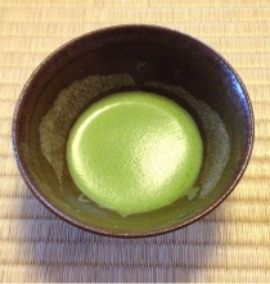 On a recent twelve-day journey to Japan, I was struck by the beauty and boldness of Shizuoka Prefecture, just a couple hours south of Tokyo. Boasting a breathtaking rugged coastline, the earliest cherry blossoms in Japan, the largest market share of wasabi, over 40% of the green tea grown in Japan, deliciously brewed Ginjoshu super-premium sake and the most ryokans or inns in Japan. I was thrilled to spend five days exploring this wondrous region that in many ways is a gourmet’s delight and a hidden gem.
On a recent twelve-day journey to Japan, I was struck by the beauty and boldness of Shizuoka Prefecture, just a couple hours south of Tokyo. Boasting a breathtaking rugged coastline, the earliest cherry blossoms in Japan, the largest market share of wasabi, over 40% of the green tea grown in Japan, deliciously brewed Ginjoshu super-premium sake and the most ryokans or inns in Japan. I was thrilled to spend five days exploring this wondrous region that in many ways is a gourmet’s delight and a hidden gem.
Green tea was growing everywhere—in neighborhoods, on mountain terraces and in plantations manicured to perfection, awaiting their first of three harvests commencing this May. Tea is in fact one foundation of Japanese culture. The expression nichijo sahanji includes the character for “tea” and “meal” and translates as
“an everyday occurrence.” This phrase has become deeply rooted in the
life of Japanese people and its ultimate art form is the tea ceremony.
Tea is used in many forms and is said to be extremely healthy to ingest. Some Japanese have 6 to 10 cups per day. It can be found in foods, sweets, beverages, cosmetics and more. I had the opportunity to make matcha, the tea of the traditional tea ceremony blessed by nature with a sweet aroma and a brilliant green color. The tealeaves were ground by stone into a fine powder containing all of the natural flavor and nutrients of the entire leaf. Brilliantly delicious.
Wasabi fields nestled near Joren Falls could only surpass this luscious green color. I climbed down nearly one hundred wooden stairs to uncover a gorgeous waterfall abutted by wild wasabi nurtured by its pure waters, a naturally beautiful site found in this indigenous volcanically rich soil. Shizuoka also has some of the finest sake made in Japan and is home to 29 breweries. It was tremendous fun to visit a small brewery and to walk through a complex multi-step process of milling the fine rice, fermentation and aging. What also makes Shizuoka sake so good is the water, which is highly pure and sourced from Mount Fuji. So flavorful and so Japanese. Mother nature was in her glory.
It was lovely strolling through the quaint hot-spring village of Shuzenji on Izu Peninsula with its historic buildings and bamboo groves. The mystery of Shuzenji is what you cannot see from the streets—its world-class ryokans and onsens tucked away on perfectly groomed gardens hidden away from view. Frequented by foreign dignitaries, they offer only the finest of Japanese hospitality in a relaxing, refined and quintessential setting and a must part of the Japanese experience. Only a short distance from Tokyo, it is not a place to be missed.
It is said that timing is everything and I was fortunate to venture to Kawazu, which features the earliest bloom of cherry blossoms in Japan. First blooming in late January, Kawazu’s variety of cherry blossoms are a deeper pink and heartier than their cousin the Yoshino cherry tree. Lasting for over a month, Kawazu’s riverbanks were lined with these magnificent blossoms amidst its annual cherry blossom festival.
For an art aficionado like myself, it was wonderful to find the Tokaido Hiroshige Art Museum, a small boutique museum, exhibiting Hiroshige’s original ukiyo-e or woodblock prints illustrating his depiction of the Fifty-three Stations of the Tokaido Road. Also to be rivaled is the cuisine in Shizuoka, which was magnificent and included local specialties such as Alfonsino, a top-class fish on Tokyo tables and kakiage or fried cherry-colored shrimp, and a particular specialty of Shizuoka.
The Shinto deity Princess Konohanasakuya is believed to be as beautiful as a cherry blossom. Refusing to accept the fact that – like the fabled cherry blossoms – one day her beauty would fade, the Princess rode to the top of Mount Fuji on a white horse and leaving her sword behind at the summit, ascended to heaven. This “Cherry Princess” withheld our view of Mount Fuji but only for a short while where a glimpse can surely capture one’s imagination.
Shizuoka is just a brief journey from Tokyo and offers many special experiences for travelers wanting a weekend getaway or an adventure to incorporate as part of a larger trip.
Let JapanQuest Journeys introduce you to Shizuoka and experience the very finest that Japan has to offer.
Scott Gilman
Springtime in Japan is Fabulous
Posted on February 1, 2012 within News
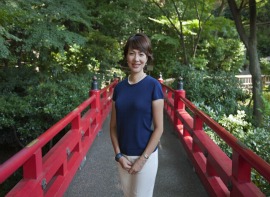 Japan is a nation with four distinct seasons and abundant, beautiful natural scenery. From long ago, the Japanese people have enjoyed the distinct attributes of winter, spring, summer and fall. Whether partaking in activities or celebrations that come with the change in seasons or enjoying delicious seasonal delicacies, the Japanese people are thankful for the bounty and beauty that nature has bestowed upon them.
Japan is a nation with four distinct seasons and abundant, beautiful natural scenery. From long ago, the Japanese people have enjoyed the distinct attributes of winter, spring, summer and fall. Whether partaking in activities or celebrations that come with the change in seasons or enjoying delicious seasonal delicacies, the Japanese people are thankful for the bounty and beauty that nature has bestowed upon them.
This love of nature is reflected in Japanese arts and culture. The haiku, which is the pinnacle of Japanese poetic expression, must and most prominently features a reference to nature.
If you ask Japanese people which season they most enjoy, most will say, “Spring.” Given how Japanese are moved so much by nature, I am sure that you can imagine how wonderful spring in Japan must be. As the snow begins to melt and the days gradually become warmer, spring is the time when one can directly feel thanks for the warmth of the sun. Spring is also a time to enjoy wonderful seasonal foods including sansai ryori, a delicacy the taste of which reflects the transition of the seasons. Sansai or mountain vegetables have an initial bitter taste but after a few moments, their wonderful aroma and sweetness prevail in the same manner that the spring visits after a long, cold winter.
For many Japanese, the cherry blossoms that emerge in the spring are Japan and embody the Japanese view of the world. The Japanese love for cherry blossoms in not something that is felt on a rational level, but rather it is in the Japanese DNA. Unlike a gorgeous rose or lily, the cherry blossom has an ephemeral beauty that is enjoyed but for a brief period of time before they scatter in a warm spring breeze. The Japanese love for cherry blossoms is difficult to explain in words but one, which you will surely feel and understand when you visit Japan during this beautiful time of the year.
This spring, under the snow like cherry blossoms, enjoy delicious sansai ryori and Japanese sake while composing your own haiku and enjoy the best that Japan has to offer.
Let JapanQuest Journeys introduce you to Japan’s springtime and experience the very finest that Japan has to offer during this beautiful and lively time of the year.
Mitsuna Satooka
Winter in Japan is Absolutely Gorgeous
Posted on November 28, 2011 within News
 Japan is gorgeous in winter offering a range of wonderful activities from enjoying some of the of the world’s finest ski slopes to participating in age old cultural traditions. Host to two Winter Olympic games, Japan provides skiers the chance to experience some of the world’s best snow. Whether on the slopes of Shiga Kogen or Hakuba in Nagano (which are easily accessible by train from Tokyo), or in the mountains of Niseko on the northernmost island of Hokkaido, Japan is a skier’s paradise.
Japan is gorgeous in winter offering a range of wonderful activities from enjoying some of the of the world’s finest ski slopes to participating in age old cultural traditions. Host to two Winter Olympic games, Japan provides skiers the chance to experience some of the world’s best snow. Whether on the slopes of Shiga Kogen or Hakuba in Nagano (which are easily accessible by train from Tokyo), or in the mountains of Niseko on the northernmost island of Hokkaido, Japan is a skier’s paradise.
Holidays and festivals are an integral part of Japanese culture and winter ushers in New Years, one of the most important holidays on the Japanese calendar, along with the Sapporo Snow Festival, a personal favorite of mine. No matter where you are in Japan, New Years is a unique opportunity to witness and partake in a centuries old tradition as well-wishers, many dressed in beautiful kimono, gather at their local temple or shrine to ring out the old year and welcome in the new. Replete with seichi ryori or special seasonal delicacies found only during the holiday, New Years is truly a special and quaint time of year to visit Japan.
From the subdued elegance of the New Year holiday, it is but a month to the extravagant Sapporo Snow Festival to be held from February 6 through February 12, 2012. I have been to the Sapporo Snow Festival several times with my family and we are continually thrilled by seeing the dozens of meticulously carved and larger than life snow and ice sculptures. As one strolls among the gigantic snow sculptures, it is great fun for all ages to sample to the variety of local food and drinks sold by one of the many street vendors.
Winter also brings an opportunity to see nature in a way that can only be found in Japan, the Snow Monkeys. In the mountains of Nagano lies Jigokudani Onsen where a group of macaque monkeys have discovered the pleasure of an onsen or warm outdoor bath. From their mountain perches, the monkeys descend each morning to enjoy a day soaking in a warm wonderful bath. Witnessing this event is both exciting and a photographer’s dream.
Flying off to the Island of Kyushu and experiencing pottery making under the guidance of a master craftsman in the cool crisp mountain air is the ultimate artistic experience. After spending the day creating a piece of work that you will cherish, relax at an exquisite Japanese inn where you will enjoy the finest Japanese hospitality. Some of our favorite inns in Kyushu are to be found in the upscale resort town of Yufuin and in the mountains of Kirishima near Kagoshima.
Let JapanQuest Journeys introduce you to Japan’s winter wonders and experience the very finest that Japan has to offer during this beautiful and exciting time of the year.
Philip Rosenfeld
Kyoto is a Magical Journey
Posted on October 18, 2011 within News
 Kyoto is magical and it is easy to understand why the city received Conde Nast Travelers Readers’ Choice Award as the best Asian city of 2011. A journey to Kyoto, Japan’s ancient capital, is to take a step back in time and to experience the essence of Japanese culture. From ancient temples and shrines where centuries old traditions are carried out before your eyes to the cobblestone alleys of Gion, the city’s historic Geisha quarter, where teahouses are filled each evening with music and laughter, the past comes alive in Kyoto.
Kyoto is magical and it is easy to understand why the city received Conde Nast Travelers Readers’ Choice Award as the best Asian city of 2011. A journey to Kyoto, Japan’s ancient capital, is to take a step back in time and to experience the essence of Japanese culture. From ancient temples and shrines where centuries old traditions are carried out before your eyes to the cobblestone alleys of Gion, the city’s historic Geisha quarter, where teahouses are filled each evening with music and laughter, the past comes alive in Kyoto.
No matter what season you experience Kyoto, its cultural refinement and grace, complimented by abundant natural beauty, beckon you to delve first-hand into the wonders and charm that the city has to offer. In summer relax in front of the glistening moss garden of an ancient temple admiring its subtle beauty as others have done before you for hundreds of years. While in fall, meander through the tranquil environs of a solitary temple that comes alive in the glow of autumn leaves where you may try meditation in the company of the friendly temple priest. Winter, perhaps my favorite time of year, brings a certain solitude along with a blanket of snow that makes the city’s charm and beauty all the more radiant. As spring bursts forth with a wave of fragrant cherry blossoms that cover the city in a canopy of ephemeral beauty, stroll through the grounds of imperial villas that become like a work of art.
A journey to Kyoto would not be complete without an evening in a ryokan or Japanese inn. From a former Buddhist temple that is now a luxuriously appointed inn located deep in the surrounding mountains to an impeccable inn located in the center of Kyoto, an evening at a ryokan is a holistic experience. A ryokan allows you to enjoy with all of your senses the refinement of Kyoto that has been developed and nurtured over generations. Passing the evening in a simple tatami room of refined elegance while enjoying a delicious kaiseki meal served with understated grace and style is an experience that you will never forget.
Let JapanQuest Journeys introduce you to the wonders of Kyoto and see first-hand why Kyoto is the recipient Conde Nast Travelers Readers’ Choice Award as the best Asian city of 2011.
Philip Rosenfeld
JapanQuest Journeys Fabulous Autumn Offering
Posted on September 28, 2011 within News
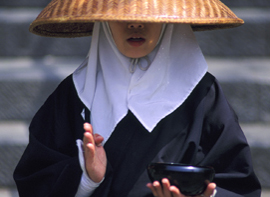 Please download and glance at our Flyer— Autumn in Japan is Fabulous.
Please download and glance at our Flyer— Autumn in Japan is Fabulous.
Let JapanQuest Journeys expertly lead you on an unforgettable and compelling trip full of intimate discoveries through the real Japan, through the seasons of a country traditional yet modern, and rich in scenic beauty and cultural heritage.
Click Here For JapanQuest Journeys’ Fabulous Autumn Offering PDF
JapanQuest Journeys
Recent Journey to Japan
Posted on July 12, 2011 within News
A few days ago, I returned from a trip to Japan (Tokyo-Kyoto-Hiroshima-Miyajima) and wanted to share a few thoughts. In all areas visited and through many conversations with government officials, owners of inns, hotel managers, colleagues and friends across the country, I found that the Japanese people are eager to welcome back visitors. Individuals are going about their business as usual, people are traveling on holiday and there were noticeable levels of foreigners traveling as well–enjoying themselves. Some hotels were at capacity such as in Kyoto while others who rely a bit more on foreign travel are looking forward to increased tourism in the days to come. Restaurants were lively, food was exquisite and there were many tourists at all the major sites.
It was an extremely positive experience to return and I can undoubtedly say that Japan is open for business! I traveled with a cross-section of travel professionals from across the US and all left excited with Japan as their destination of choice. What better way to support its people and the country than to visit this enchanting and captivating place.
Scott Gilman
Yanaka is One of Tokyo’s Most Cherished Neighborhoods
Posted on June 2, 2011 within News
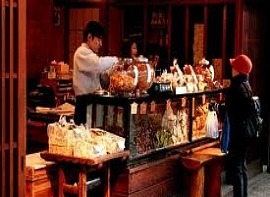
As part of a series of articles on our favorite neighborhoods in Tokyo, JapanQuest Journeys takes you to Yanaka, in many ways the best preserved area of old Edo. Strolling through Yanaka is like a trip back in time. On each occasion that I wander through and explore the narrow streets of this quiet and serene neighborhood, I always find something new and intriguing.
Yanaka is home to Tokyo’s largest concentration of temples, originally built at the onset of the Edo period in the early 17th century. Tokugawa Ieyasu, ever wary that the temple priests may try to meddle in politics, ordered that Edo’s temples be constructed in one area to keep them under his watchful eye. For a modern day visitor to Tokyo, the result of Ieyasu’s endeavor was to create one of the most serene areas of the city. Strolling along Yanaka’s winding roads, by countless temple gates, one gets a glimpse into a world unto itself, with beautiful gardens and splendid shrines. One of my favorite temples in all of Japan, Tennoji, is to be found in Yanaka. This temple, which houses a large sitting bronze Buddha cast in 1690, harmoniously combines modern and traditional design and is simply stunning to behold.
Yanaka is also home to wonderful and traditional shops that have been in business for generations, whose delicious sampling of delicacies you will surely be tempted to try. Let JapanQuest Journeys expertly guide you through the backstreets of Yanaka and show you a part of Japan that we cherish so much.
During the coming months, we will introduce you to some of our favorite neighborhoods in Tokyo, each with its own unique flavor and spirit providing you with a taste of what you can expect to find on an incredible journey to Japan.
Philip Rosenfeld
JapanQuest Journeys Extraordinary Summer Offering
Posted on May 24, 2011 within News
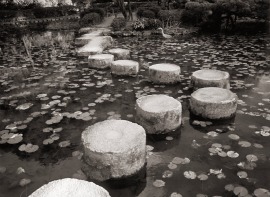 Please download and glance at our Flyer— a season of charm and calm.
Please download and glance at our Flyer— a season of charm and calm.
Let JapanQuest Journeys expertly lead you on an unforgettable and compelling trip full of intimate discoveries through the real Japan, through the seasons of a country traditional yet modern, and rich in scenic beauty and cultural heritage.
Click Here For JapanQuest Journeys’ Extraordinary Summer Offering PDF
JapanQuest Journeys
JapanQuest Journeys Reports on May 16, 2011 U.S. Department of State Update on Traveling to and within Japan
Posted on May 17, 2011 within News
United States Department of State
Bureau of Consular Affairs
Washington, DC 20520
JAPAN
May 16, 2011
This Travel Alert replaces the Travel Alert for Japan dated April 14, 2011. The U.S. Government is updating its recommendation on the safe use of the Tohoku Expressway and the Tohoku Shinkansen Railway through the 50-mile evacuation area. Using the same analysis we would use in a similar situation in the United States, the U.S. Government believes it is safe for U.S. citizens to use the railway and expressway for transit through the area. Other portions of this Travel Alert remain unchanged from the Alert published on April 14. This Travel Alert expires on July 15, 2011.
Fukushima Daiichi Nuclear Power Plant
The assessment of technical and subject matter experts across United States Government agencies is that while the situation at the Fukushima Daiichi plant remains serious and dynamic, the health and safety risks to areas beyond the 50-mile evacuation zone, and particularly to Tokyo, Nagoya (Aichi Prefecture), Yokohama (Kanagawa Prefecture), nearby U.S. military facilities, and the prefectures of Akita, Aomori, Chiba, Gunma, Iwate, Nagano, Niigata, Saitama, Shizuoka, Tochigi, and Yamanashi, and those portions of Fukushima, Ibaraki, Miyagi and Yamagata prefectures which are outside a 50-mile radius of the Fukushima Daiichi nuclear power plant are low and do not pose significant risks to U.S. citizens.
This analysis takes into consideration both various age groups and the classification of the severity of the situation at Fukushima Daiichi as a Level 7 event by the Government of Japan, which reflects what has transpired since the initial incident and the potential long-term effects in the area surrounding the plant.
This assessment reflects inputs from our national laboratories as well as the unanimous opinion of the U.S. scientific experts on the ground in Japan. Furthermore, they are consistent with practices that would be taken in the United States in such a situation. Based on the much reduced rate of heat generation in the reactor fuel after one month of cooling and the corresponding decay of short-lived radioactive isotopes, even in the event of an unexpected disruption at the Fukushima Daiichi plant, harmful exposures to people beyond the 50-mile evacuation zone are highly unlikely, and there would be a significant amount of time to best assess any steps that might have to be taken.
The situation at the plant is dramatically different today than it was on March 16, when we saw significant ongoing releases of radioactivity, the loss of effective means to cool the reactor cores and spent fuel, the absence of outside power or fresh water supply for emergency management, and considerable uncertainty about the condition of the site. Today, while the situation remains serious, and there is still a possibility of unanticipated developments, cooling efforts are ongoing and successful, power, water supply, and back-up services have been partially or fully restored, and planning has begun to control radioactive contamination and mitigate future dangers. Our coordination with the Japanese is regular and productive, and we have a greatly increased capacity to measure and analyze risks.
On April 14, 2011, the Department of State lifted Voluntary Authorized Departure, allowing dependents of U.S. government employees to return to Japan.
Out of an abundance of caution, we continue to recommend that U.S. citizens avoid travel within the 50-mile radius of the Fukushima Daiichi Nuclear Plant. U.S. citizens who are still within this radius should evacuate or shelter in place.
Though the U.S. Government is not currently making changes to its recommendation to avoid travel to the 50-mile radius, we are updating the recommendation on the safe use of the Tohoku Expressway and the Tohoku Shinkansen Railway through the 50-mile evacuation area. These transport routes are currently open to public use. The U.S. Government believes it is safe for U.S. citizens to use the railway and expressway to transit through the area. This updated decision is based on measurements taken by U.S. Government scientists; more information may be found at the Department of Energy website, http://blog.energy.gov/content/situation-japan/.
Risk of Aftershocks
Japan is one of the most seismically active areas in the world. Tokyo and areas to the northeast continue to experience strong aftershocks related to the March 11 earthquake. Aftershocks following an earthquake of this magnitude can be expected to continue for more than a year. Identifying potential hazards ahead of time and advance planning can reduce the dangers of serious injury or loss of life from an earthquake. See the Embassy Website for detailed information on earthquake safety: http://japan.usembassy.gov
American Citizen Services
JapanQuest Journeys Welcomes Luxury Travelers Back to Japan
Posted on April 26, 2011 within News
JapanQuest Journeys, the premier destination management company for Japan, welcomes luxury travelers back as Japan’s doors open once again.
Please download and glance at our Flyer—JapanQuest Journeys Welcomes Luxury Travelers Back to Japan where we provide important travel information, insight into current conditions and why Japan continues to be a compelling destination for luxury travelers.
Important Travel Information from JapanQuest Journeys’ Tokyo Office
Most of Japan’s major tourist areas, transportation systems and food supplies were unaffected by the earthquake and tsunami and are safe and fully available for travel and enjoyment.
The U.S Department of State has downgraded its travel alert stating that health and safety risks are low and do not pose significant risks outside a defined 50 mile/80 kilometer radius around the Fukushima Daiichi Power Plant which lies approximately 185 miles/300 kilometers north of Tokyo. Other governments have also updated their travel advisories to more accurately reflect the status of the country in terms of safety and security.
The Japan National Tourism Organization has resumed promoting tourism to Japan.
JapanQuest Journeys also provides highlights of Japan’s demographics and geography along with the proximity of major tourist destinations.
The Japan National Tourism Organization (JNTO) and Partner of JapanQuest Journeys Announces it has Resumed Promoting Tourism to Japan
Posted on April 21, 2011 within News
JNTO President: JNTO Resumes Tourism Promotion
New York, NY, April 20, 2011 As the situations in Japan have been assessed by various governments and international authorities as stable, the President of Japan National Tourism Organization Mr. Tadatoshi Mamiya announced that JNTO is to resume promoting tourism to Japan>.
It is now just over a month since the earthquake and tsunami hit the coast of the Tohoku region in Japan. We are very grateful for the generous contributions and support that we have received from all over the world. The support has been very important to us, and the Japanese people are determined to put all our efforts into recovery actions, in response to the outpouring of encouragement and solidarity that we have received from the global community.
The Japan National Tourism Organization will support the rebuilding efforts by continuing to pursue our mission to positively promote Japan as a vibrant, beautiful destination, brimming with unique cultural attractions, exciting cities, and friendly people.
We will continue to distribute the latest detailed and accurate information about travel to Japan, as well as to actively develop our promotional activities in order to encourage many people to visit Japan. To this end, your support and cooperation are indispensable.
Most of Japan’s regions were unaffected by the earthquake, and we invite you to see the present condition of Japan for yourselves. We invite the world’s media and tourism professionals to visit Japan, and to observe first-hand how Japan is still a unique and attractive travel destination.
Japan is now entering a beautiful season of new spring flowers and scenery. We continue to welcome visitors from all over the world with an unchanging spirit of hospitality, as we have always done. We will strive to encourage even more tourists to visit Japan, and when they do, the people of Japan will thank them for their messages of encouragement, prayers, and support that are helping the nation to recover from this disaster.
Sincerely,
Tadatoshi Mamiya
President
Japan National Tourism Organization
JNTO continues to provide daily updates on its website and its New York and Los Angeles offices take inquires. At the same time, tourism promotion is back to normal for entire country except for the affected areas in the Tohoku region.
For more information contact:
Nori Akashi, Public Relations Manager
nakashi@jntonyc.org
JapanQuest Journeys Reports on United States Department of State Update on Traveling to Japan
Posted on April 15, 2011 within News
United States Department of State
Bureau of Consular Affairs
Washington, DC 20520
JAPAN
April 14, 2011
This Travel Alert replaces the Travel Warning for Japan dated March 31, 2011. This Travel Alert expires on June 15, 2011.
The assessment of technical and subject matter experts across United States Government agencies is that while the situation at the Fukushima Daiichi plant remains serious and dynamic, the health and safety risks to areas beyond the 50 mile evacuation zone, and particularly to Tokyo, Nagoya (Aichi Prefecture), Yokohama (Kanagawa Prefecture) nearby U.S. military facilities and the prefectures of Akita, Aomori, Chiba, Gunma, Iwate, Nagano, Niigata, Saitama, Shizuoka, Tochigi, and Yamanashi, and those portions of Fukushima, Ibaraki, Miyagi and Yamagata prefectures which are outside a 50 mile radius of the Fukushima Daiichi nuclear power plant are low and do not pose significant risks to U.S. citizens.
This analysis takes into consideration both various age groups and the classification of the severity of the situation at Fukushima Daiichi as a Level 7 event by the Government of Japan, which reflects what has transpired since the initial incident and the potential long-term effects in the area surrounding the plant.
This assessment reflects inputs from our national laboratories as well as the unanimous opinion of the U.S. scientific experts on the ground in Japan. Furthermore, they are consistent with practices that would be taken in the United States in such a situation. Based on the much reduced rate of heat generation in the reactor fuel after one month of cooling and the corresponding decay of short-lived radioactive isotopes, even in the event of an unexpected disruption at the Fukushima Daiichi plant, harmful exposures to people beyond the 50 mile evacuation zone are highly unlikely, and there would be a significant amount of time to best assess any steps that might have to be taken.
The situation at the plant is dramatically different today than it was on March 16, when we saw significant ongoing releases of radioactivity, the loss of effective means to cool the reactor cores and spent fuel, the absence of outside power or fresh water supply for emergency management, and considerable uncertainty about the condition of the site. Today, while the situation remains serious, and there is still a possibility of unanticipated developments, cooling efforts are ongoing and successful, power, water supply, and back-up services have been partially or fully restored, and planning has begun to control radioactive contamination and mitigate future dangers. Our coordination with the Japanese is regular and productive, and we have a greatly increased capacity to measure and analyze risks.
The Department of State has lifted Voluntary Authorized Departure, allowing dependents of the U.S. government employees to return to Japan.
We continue to recommend that U.S. citizens avoid travel within the 50-mile radius of the Fukushima Daiichi Nuclear Plant. U.S. citizens who are still within this radius should evacuate or shelter in place.
Japan is one of the most seismically active places in the world. Tokyo and areas to the Northeast continue to experience strong aftershocks related to the March 11 earthquake. Aftershocks following an earthquake of this magnitude can be expected to continue for more than a year. Identifying potential hazards ahead of time and advance planning can reduce the dangers of serious injury or loss of life from an earthquake. See the Embassy Website for detailed information on earthquake safety:
http://japan.usembassy.gov .
————————-
American Citizen Services
————————-
JapanQuest Journeys Shares a Few Words About the Japanese People
Posted on March 31, 2011 within News
Please download and glance at our Flyer—A few words about the Japanese people.
JapanQuest Journeys Shares a Few Words About the Japanese People
Posted on March 31, 2011 within News
The events of the past few weeks have brought into focus the best of the Japanese people. Fortitude, compassion, kindness and civility are but a few words that come to mind. Like most people living in Japan, I have been following news of the ongoing relief efforts with great interest and concern and what strikes me as being absolutely wonderful is the extent to which those people in the effected communities have come together to assist one another in their time of greatest need. Where organized relief efforts may have taken time to get through, individuals have joined together to create a semblance of normal life through simple measures such as building a basic but private bathhouse.
Furthermore, an entire nation has come together in an outpouring of compassion and support as people in all walks of life are doing what they can to support their fellow citizens. I must also mention the generous support and assistance that the Japanese have received from many individuals and countries around the world and the appreciation that has been expressed in Japan for this help. The cohesiveness of Japanese society is one of its greatest strengths and I can say with absolute confidence that the effected communities will rebuild and will be stronger than they were before. Watching the response of the Japanese people to the hand that nature has dealt them reaffirmed a decision I made many years ago to live in this wonderful country.
Japan is a sprawling land, which if juxtaposed on a map of the United States would run along the entire east coast from Maine to northern Florida. Fortunately the vast majority of its people and infrastructure were not physically harmed. Although deep sympathy is felt globally for the plight of those in the Tohoku region in the north, life is relatively unscathed in the vast majority of the country; including transportation systems, food supplies, industrial capacity and electrical grids. This fact alone will accelerate Japan’s bid towards normalcy.
We hope that you too will have the chance soon to experience the best of Japan, its people. It is truly an extraordinary country.
JapanQuest Journeys will keep you informed with valuable insight as Japan’s doors open once again—allowing us to put journeying to Japan back into perspective.
Philip Rosenfeld
JapanQuest Journeys Co-founder Philip Rosenfeld Comments on Relief Efforts for Tsunami and Earthquake Victims
Posted on March 16, 2011 within News
On the Ground: The Jewish Community of Japan
“The Japanese are a resilient people and I am one hundred percent confident they will bounce back from this and be stronger than they were before, said Philip Rosenfeld.” For the complete article, click on
On the Ground: The Jewish Community of Japan
Nihonbashi is One of Our Favorite Tokyo Neighborhoods
Posted on March 8, 2011 within News
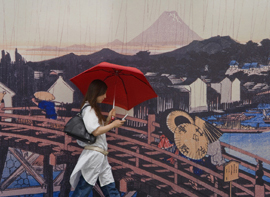 Please download and glance at our Flyer—enjoy one of our favorite Tokyo neighborhoods.
Please download and glance at our Flyer—enjoy one of our favorite Tokyo neighborhoods.
During the coming months, we will introduce you to some of our favorite neighborhoods in Tokyo, each with its own unique flavor and spirit providing you with a taste of what you can expect to find on an incredible journey to Japan.
Click Here For JapanQuest Journeys’ Nihonbashi is One of Our Favorite Tokyo Neighborhoods PDF
JapanQuest Journeys
JapanQuest Journeys Releases its Newest Marketing Brochure for Top Travel Consultants and Clients Worldwide
Posted on March 2, 2011 within News
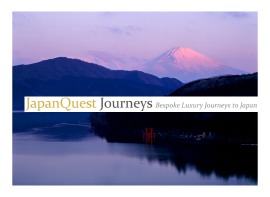 Please download and peruse our Brochure for top travel consultants and clients worldwide.
Please download and peruse our Brochure for top travel consultants and clients worldwide.
JapanQuest Journeys, the premier destination management company for Japan, offers its newest marketing brochure for top travel consultants and clients worldwide.
Click Here For JapanQuest Journeys’ Top Travel Consultant and Client Brochure PDF
JapanQuest Journeys
Nihonbashi is One of Our Favorite Tokyo Neighborhoods
Posted on March 2, 2011 within News

The beauty of Tokyo lies in its individual neighborhoods and in many ways Tokyo is the largest, most exciting village in the world. Over the course of nearly thirty years in Japan, I have spent countless hours and days exploring Tokyo only to find something new, exciting and beautiful with each adventure. From a quiet neighborhood shrine or temple where I can hear my own footsteps as I walk through the enchantingly serene grounds to some of the most modern landscapes in the world, Tokyo is an extraordinary city to behold and explore.
The juxtaposition of the historical with the modern in terms of architecture, customs and trends make Tokyo unique and very different from any other city in the world. Modern architectural masterpieces exist side by side with shops that have been in business for generations where kimono clad customers mingle with clientele wearing the latest designer fashions. Nowhere is this scene replayed more often than in Nihonbashi, the commercial epicenter of old Edo. As the twilight gives way to darkness, one can sense the melancholy of a bygone era when strolling down the quiet backstreets of Nihonbashi and many other neighborhoods in Tokyo.
During the coming months, we will introduce you to some of our favorite neighborhoods in Tokyo, each with its own unique flavor and spirit providing you with a taste of what you can expect to find on an incredible journey to Japan.
Nihonbashi is the home of our Partner, the Mandarin Oriental, Tokyo
The accompanying image depicts Nihonbashi bridge during the Edo period.
Philip Rosenfeld
Springtime in Japan is Absolutely Spectacular
Posted on February 2, 2011 within News
 Please download and glance at our Flyer— enjoy the splendor of Japan in one of its finest seasons.
Please download and glance at our Flyer— enjoy the splendor of Japan in one of its finest seasons.
Let JapanQuest Journeys expertly lead you on an unforgettable and compelling trip full of intimate discoveries through the real Japan, through the seasons of a country traditional yet modern, and rich in scenic beauty and cultural heritage.
Click Here For JapanQuest Journeys’ Springtime in Japan is Absolutely Spectacular PDF
JapanQuest Journeys
Japan in Springtime is Absolutely Spectacular
Posted on January 25, 2011 within News

Spring is perhaps my favorite time of year for traveling throughout Japan. From viewing beautiful cherry blossoms and visiting exquisite gardens to enjoying colorful local festivals, spring in Japan offers a wealth of delightful experiences.
As winter gives way to the warmth of spring, the cherry blossoms for which Japan is famed, burst forth into bloom covering the country in a blanket of pink. Cherry blossoms or sakura as they are known in Japanese, represent the epitome of the Japanese love for nature: simple, beautiful and ephemeral. There is nothing more pleasant than strolling under a canopy of cherry blossoms on a bright blue day as a light wind blows, the branches sway and the blossoms scatter in the air like snow. Whether set against the backdrop of snow capped mountains in Matsumoto, an ancient temple in Kyoto or simply a local neighborhood or park in Tokyo, Japan offers a myriad of wonderful opportunities to see and enjoy this annual display of evanescent beauty.
Spring is also a delightful time to visit Japan’s exquisite gardens. Whether an immaculate stroll garden such as Kanazawa’s Kenrokuen or a wondrous temple garden such as that found at Sanzenin Temple outside of Kyoto, spring offers the opportunity to see these gardens in all their glory with an array of seasonal flowers. At Kenrokuen, as you cross a small wooden bridge that runs over a meandering stream, you will gaze upon hundreds of purple and blue irises rising tall in the water and the subject of so many famous Japanese paintings and love poems. You will feel as if you are in an open-air museum gazing upon a beautiful Japanese screen. Likewise, the eight hundred year old main hall at Sanzenin provides a stunning sight surrounded by hundreds of clusters of white, pink and blue hydrangea.
With spring also comes an array of colorful local festivals or matsuri. The most prominent of such festivals is the Sanno Matsuri, held in Takayama since 1652. As part of this festival which takes place in mid-April, large, ornate floats hundreds of years old, decorated with fantastic works of art, are pulled through this Edo period town by dozens of men as taiko drums play and people celebrate. The Sanno Matsuri, and Japan’s many other spring matsuri, are truly spectacular to behold.
Let JapanQuest Journeys introduce you to the sublime beauty of Japan and its wonderful sights and sounds on an extraordinary journey this spring.
Philip Rosenfeld
An Unforgettable Journey to Naoshima in Japan’s Inland Sea
Posted on January 4, 2011 within News
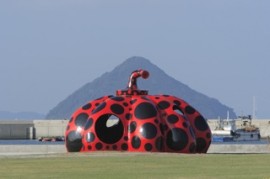 Please download and glance at our Flyer— a must for art lovers and those who seek a restful setting at the end of an exciting journey to Japan.
Please download and glance at our Flyer— a must for art lovers and those who seek a restful setting at the end of an exciting journey to Japan.
Let JapanQuest Journeys expertly lead you on an unforgettable and compelling trip full of intimate discoveries through the real Japan, through the seasons of a country traditional yet modern, and rich in scenic beauty and cultural heritage.
Click Here For JapanQuest Journeys’ Explore the Art and Beauty of Naoshima PDF
JapanQuest Journeys
An Unforgettable Journey to Naoshima in Japan’s Inland Sea
Posted on January 3, 2011 within News

Imagine a ten-minute ferry ride from the Port of Uno on a beautiful day seeing blue waters and rocky islands jutting out from the serene Inland Sea. Our destination, Naoshima Island, a bastion of contemporary art, was tucked just far enough away to create a mystery of what one would find upon arrival. As the ferry approached Naoshima, I was struck by the natural beauty in front of me and the holistic incorporation of architectural design and sculpture unobtrusively set into the island’s landscape. What a truly remarkable blend of contemporary architecture and natural surroundings.
Riding several minutes to Benesse House, Tadao Ando’s architectural masterpiece, I arrived to find a stunning venue that combines the functions of a contemporary art museum and hotel. The views of the sea were breathtaking and the simplicity and large open spaces of Bennese House were perfect to enjoy this serene setting. As I set out to explore this wonderful place, I had the feeling of being left with the keys to a museum to venture around at my own pace. With colorful paintings, sculpture and photographic images abound, it’s an unforgettable journey—“where one can enjoy enriching encounters with artworks in the changing light over the course of a day”.
A journey to Naoshima is hardly complete without strolling the island, walking the beaches and visiting the Art House Project and Chichu Art Museum. At the Art House Project, artists capture one’s imagination by transforming a series of traditional Japanese homes and a shrine into works of contemporary art each reflecting the individual artist’s unique vision and talents. As the Art House Project is spread out through an active fishing village, wandering from site to site allows one to experience life in this redolent part of Japan that time, in a sense, has passed by. This juxtaposition of contemporary artistic creativity in such perfect harmony with the traditional culture surrounding it is simply fabulous to see.
My last stop, the exquisite Chichu Art Museum, was built to provide a site to “consider the relationship between nature and human beings”. Chichu houses the works of three artists: James Turrell, Claude Monet and Walter De Maria and is a place where one’s experience is stimulated both intellectually and emotionally with the rhythm of the Inland Sea. Approaching the museum, one finds “Chichu Garden” designed with plants cherished by Claude Monet and which holds a beautiful resemblance to Giverny, the garden he himself designed. A one or two night stay in Naoshima is a must for art lovers and those who seek a restful setting at the end of an exciting journey to Japan.
Scott Gilman
New Year in Japan is Steeped in Spiritual and Cultural Traditions
Posted on December 19, 2010 within News
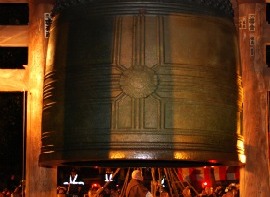 Please download and glance at our Flyer— a view into one of Japan’s most colorful times and a time that is steeped in spiritual and cultural traditions that have existed for centuries.
Please download and glance at our Flyer— a view into one of Japan’s most colorful times and a time that is steeped in spiritual and cultural traditions that have existed for centuries.
Let JapanQuest Journeys expertly lead you on an unforgettable and compelling trip full of intimate discoveries through the real Japan, through the seasons of a country traditional yet modern, and rich in scenic beauty and cultural heritage.
Click Here For JapanQuest Journeys’ New Year in Japan Flyer PDF
JapanQuest Journeys
An Extraordinary Opportunity to Experience Japan and the Finest of its Performing Arts as Introduced at Carnegie Hall
Posted on December 19, 2010 within News
 JapanQuest Journeys, as invited by the Japan National Tourism Organization, recently participated in the promotion of travel to Japan at JapanNYC at Carnegie Hall! Now available, a nine-day journey to Tokyo, Hakone, Kyoto, Nara and Sado Island (optional) with a focus on the performing arts.
JapanQuest Journeys, as invited by the Japan National Tourism Organization, recently participated in the promotion of travel to Japan at JapanNYC at Carnegie Hall! Now available, a nine-day journey to Tokyo, Hakone, Kyoto, Nara and Sado Island (optional) with a focus on the performing arts.
Through our exceptional and unique access, see the best of Japan and choose from hands-on encounters under the auspices of the celebrated Kodo Drummers on Sado Island, private concerts of the shakuhachi, koto and shamisen in exclusive settings by some of the finest masters in Japan and NYC or traditional music and dance at an exclusive venue in Kyoto performed by Geisha. This performing arts focused journey is tailor-made and available throughout the year.
Please click on PDF Sample Itinerary (Japan and the Finest of its Performing Arts)
Let JapanQuest Journeys expertly lead you on an unforgettable and compelling trip full of intimate discoveries through the real Japan.
New Year in Japan is Steeped in Spiritual and Cultural Traditions
Posted on December 1, 2010 within News
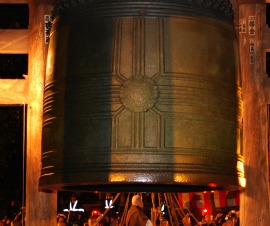 New Years is the most important holiday in Japan and is steeped in spiritual and cultural traditions that have existed for centuries. Japan was originally an agrarian society and New Years was a time for people to come together to pray for a bountiful harvest for the coming year. Even now, the Emperor will participate in a harvest related rite on New Year’s Day.
New Years is the most important holiday in Japan and is steeped in spiritual and cultural traditions that have existed for centuries. Japan was originally an agrarian society and New Years was a time for people to come together to pray for a bountiful harvest for the coming year. Even now, the Emperor will participate in a harvest related rite on New Year’s Day.
While the vast majority of Japanese families are no longer involved with agriculture, New Year celebrations in Japan continue to hearken back to the ways of the past. New Years is a time for families to gather together, to reflect on the past year and to pray for an auspicious coming year. While the New Year holiday retains an aura of solemnity, it is also an occasion to witness Japan at one of its most colorful times as women bedecked in their finest kimonos venture forth with their families to pay their first shrine or temple visit of the year. In addition, special and delicious foods rich in symbolism are enjoyed, such as toshi-koshi soba representing a long life and osechi ryori, a bento box like assortment of foods each of which symbolizes an auspicious event.
Unlike the West where New Year celebrations are limited to New Year’s Eve and New Year’s Day, the New Year period in Japan extends from New Year’s Eve through January 4th. A visit to Japan during New Years is a visit unlike any other time of year. You can not only see but can feel the connection to the past as you set forth during this period which in many ways is like entering a time warp.
Let JapanQuest Journeys expertly lead you on an unforgettable and compelling trip full of intimate discoveries through the real Japan, through the seasons of a country traditional yet modern, and rich in scenic beauty and cultural heritage.
Mitsuna Satooka
Sharing The Best of Japan
Posted on November 23, 2010 within News
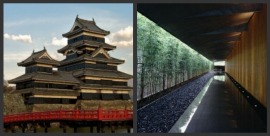 Please download and glance at our Flyer chronicling a journey to Matsumoto, a charming castle town located at the foothills of the majestic Japanese Alps during the Autumn season. Our journal then continues to describe a recent venture to the exquisite Nezu Art Museum and Japanese Gardens.
Please download and glance at our Flyer chronicling a journey to Matsumoto, a charming castle town located at the foothills of the majestic Japanese Alps during the Autumn season. Our journal then continues to describe a recent venture to the exquisite Nezu Art Museum and Japanese Gardens.
Let JapanQuest Journeys expertly lead you on an unforgettable and compelling trip full of intimate discoveries through the real Japan, through the seasons of a country traditional yet modern, and rich in scenic beauty and cultural heritage.
Click Here For JapanQuest Journeys’ Sharing The Best of Japan Flyer PDF
JapanQuest Journeys
JapanQuest Journeys Announces Exclusive Tailor-Made Holiday Packages For Asia Jet Clients
Posted on November 23, 2010 within News
 Together as travel partners, JapanQuest Journeys and Asia Jet are now offering Asia Jet clients the exclusive opportunity to experience Japan as only an insider can do! Now available, two holiday packages including private luxury jet services and on-the-ground “tailor-made” journeys for 4 days/3 nights in Japan:
Together as travel partners, JapanQuest Journeys and Asia Jet are now offering Asia Jet clients the exclusive opportunity to experience Japan as only an insider can do! Now available, two holiday packages including private luxury jet services and on-the-ground “tailor-made” journeys for 4 days/3 nights in Japan:
Tokyo & Hakone (4 days/3 nights) – An Extraordinary Way to Experience Japan in a Vibrant Yet Relaxing Way
Please click on PDF Sample Itinerary (Tokyo & Hakone)
Kyoto & Nara (4 days/3 nights) – An Extraordinary Opportunity to Experience Japan in a Historic, Artful and Relaxing Way
Please click on PDF Sample Itinerary (Kyoto & Nara)
Visit Asia Jet’s website for further information on these Exclusive Tailor-Made Holiday Packages
Venturing to the Exquisite Nezu Art Museum and Japanese Gardens
Posted on November 18, 2010 within News
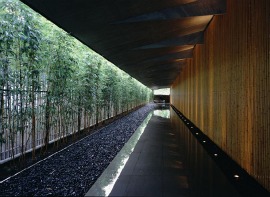
On a recent long weekend getaway to Tokyo, I took the opportunity to revisit the Nezu Art Museum located in the elegant Minami Aoyoma section of Tokyo. I was first struck by the expansive outdoor entrance way lined with perfectly set bamboo and trimmed foliage. As I entered the recently gentrified edifice, I encountered an open and contemporary architectural style to house its vast rotating collections. In the course of a year, many Japanese and East Asian arts are displayed (including 7 works designated as National Treasures). I was fortunate to view a beautiful Chinese porcelain celadon and bronze exhibition with works dating back to the 12th century or earlier.
Peering through the glass facade, I was immediately intrigued by Nezu’s exquisite Japanese gardens with its rolling slopes, stepping stones, tea houses and an extensive collection of stone lanterns perfectly placed throughout the colorful fauna. On a beautiful Autumn day, it was a serene stroll well worth taking. I am anxiously looking forward to a journey in the spring when Nezu showcases its Japanese screen or “byobu” collection. Nezu is a must see for lovers of art and Japanese gardens and a favorite suggested venue.
Scott Gilman

